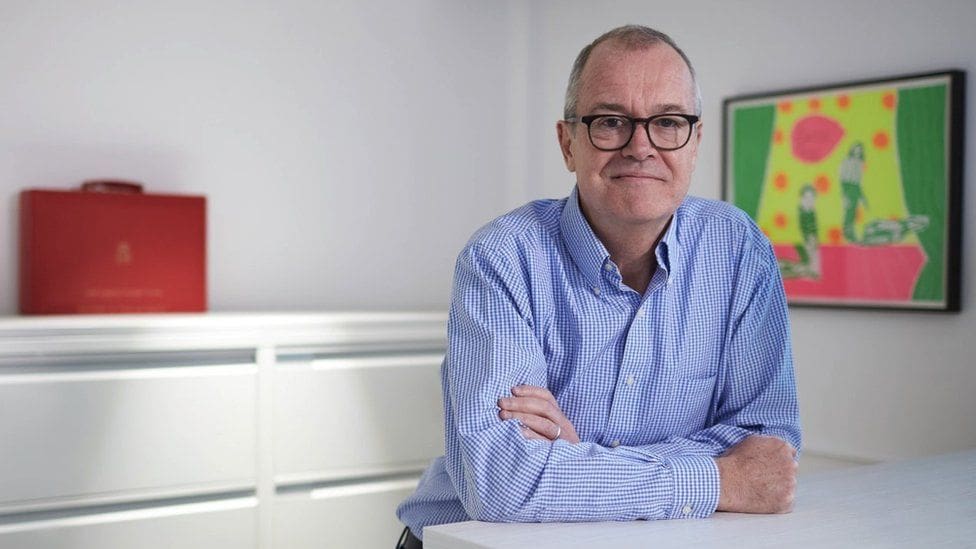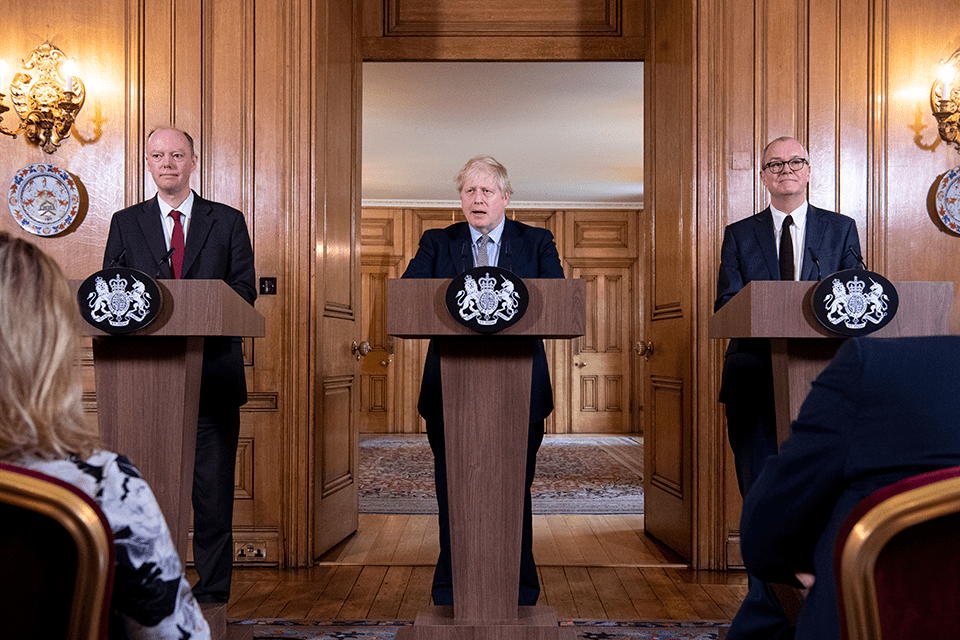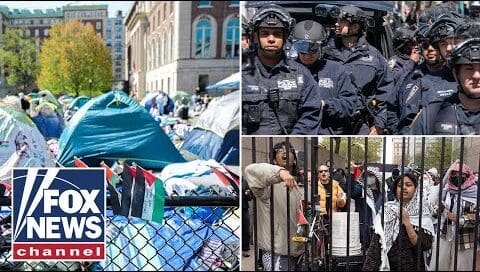

Patrick Vallance’s Defence of SAGE Modelling Fails to Convince
Chief Scientific Adviser Sir Patrick Vallance has come to the defence of SAGE and its modelling after some torrid headlines this week following a Twitter exchange between lead modeller Professor Graham Medley and Spectator editor Fraser Nelson in which Professor Medley revealed that SAGE had not been asked to model less disastrous scenarios.
Writing in the Times, Dr. Vallance appeared directly to contradict some of the statements made by Prof. Medley, leaving observers baffled as to which of the two is correct as it is unclear how both can be. Dr. Vallance claimed that modelling of other, less severe scenarios, had been done and presented to Government, while Prof. Medley said it had not, at least by his team at the London School of Hygiene and Tropical Medicine (LSHTM). Dr. Vallance writes:
The modellers always have to make assumptions and do so across a wide range of possibilities, some optimistic and some pessimistic. They do not, contrary to what you might have heard, only model the worst outcomes. They will make assumptions about vaccine effectiveness, they will model different levels of viral transmission, mixing patterns and different levels of disease severity. The range of assumptions modelled can be very broad; for disease severity for Omicron one model explored a range from 10% of Delta severity through to 100%. For immunity a range of assumptions on vaccine efficacy, speed of vaccine rollout and vaccine coverage in different parts of the population were explored.
This claim is backed up by the minutes of the most recent SAGE meeting, published yesterday, although it doesn’t square with what Prof. Medley told Fraser Nelson. Prof. Medley, who chairs the SAGE modelling committee, said that lower virulence scenarios don’t “add any further information” and implied his committee – SPI-M – had not been asked to provide them.
Fraser asked Prof. Medley: “I guess the question is why LSHTM did not (like JP Morgan) include a scenario of lower virulence – given that this is a very-plausible option that changes outlook massively.”
What would be the point of that? Not a snarky question – genuine to know what you think decision makers would learn from that scenario… If somebody draws a line on a graph it doesn’t add any further information. Decision-makers are generally only interested in situations where decisions have to be made… That scenario doesn’t inform anything. Decision-makers don’t have to decide if nothing happens… We generally model what we are asked to model. There is a dialogue in which policy teams discuss with the modellers what they need to inform their policy.
Fraser later observed that Prof. Medley appeared to be saying his brief was very limited and did not include less severe assumptions and outcomes.
He seemed to suggest that he has been given a very limited brief, and asked to churn out worse-case scenarios without being asked to comment on how plausible they are… Note how careful he is to stay vague on whether any of the various scenarios in the SAGE document are likely or even plausible. What happened to the original system of presenting a ‘reasonable worse-case scenario’ together with a central scenario? And what’s the point of modelling if it doesn’t say how likely any these scenarios are?
From what Professor Medley says, it’s unclear that the most-likely scenario is even being presented to ministers this time around. So how are they supposed to make good decisions? I highly doubt that Sajid Javid is only asking to churn out models that make the case for lockdown. That instruction, if it is being issued, will have come from somewhere else.
Dr. Vallance, on the other hand, says:
Often the job of scientific advice is to allow ministers to understand both a central case and the uncertainty surrounding it, what drives that uncertainty and when the uncertainty might be reduced. Speaking scientific truth to power is a difficult but necessary part of the democratic process if ministers are to be able to make an informed decision. This is what SAGE does.
If Dr. Vallance is accurately describing the advice given to ministers by SAGE, why did LSHTM not model those scenarios and estimate their likelihood? Why did the chairman of the SAGE modelling committee state that such scenarios had not been requested because they do not add anything useful to the discussion? The only explanation I can think of is that the broader range of scenarios referred to in the minutes of the SAGE meeting dated December 20th was not reflected in the SAGE memo circulated to ministers for that afternoon’s Cabinet meeting. That is, SAGE modelled less gloomy scenarios but didn’t bother to include them in the advice it gave to the Cabinet.
Dr. Vallance claims SAGE is a neutral adviser, being neither pessimistic nor optimistic and not pushing for any “dogmatic” answer or directive.
It is not the job of SAGE to take a particular policy stance or to either spread gloom or give Panglossian optimism. Ministers and the cabinet need to hear the information whether uncomfortable or encouraging. They of course need to factor it in to all the other information that provides inputs to policy decisions. SAGE does not provide dogmatic answers or directives, it provides information, advice, scenarios and helps determine possible consequences of actions. Part of the advice may contain a “reasonable worst case scenario” – data that are often seized upon.
But they are just that – a reasonable worst case scenario and one of many possible outcomes and trajectories presented to ministers for planning purposes and decision making.
But Dr. Vallance is failing to acknowledge the reason that prompted the need for his defence of SAGE modelling in the first place, which is that the chairman of his main modelling committee had stated that they had not been asked to provide alternative scenarios to ministers because it “doesn’t add any further information”. Dr. Vallance implies that others are at fault for having arbitrarily “seized upon” the reasonable worst case scenario presented to ministers, ignoring that the present controversy arose because the Government’s lead modeller said no other scenarios were modelled because they were pointless.
Dr. Vallance is also being, at best, naïve about the key role SAGE’s projections and advice have played in pushing the Government into making extreme interventions. His comments here about it being “not the job of SAGE to take a particular policy stance or to either spread gloom or give Panglossian optimism” are contradicted by his enthusiastic endorsement of boosters earlier in the same article – “Vaccine boosters are crucial” – and by what he told the BBC in October about his risk-averse approach to the pandemic.
My mantra for a long time during this (pandemic) has been… you’ve got to go sooner than you want to in terms of taking interventions. You’ve got to go harder than you want to, and you’ve got to go more geographically broad than you want to. And that is the Sage advice. And that’s what I’ve been saying. And I will say it going forward, and the prime minister knows that’s what I think. And he knows that’s what I would do in that situation.
That sounds very much like he’s offering policy recommendations to me, and recommendations of precisely the kind he’s denying SAGE makes in his Times article.
Dr. Vallance concludes with a defence of the role of science and the scientific method in the pandemic.
Science has served us extraordinarily well during this pandemic and has given us many insights as well as new diagnostics, vaccines and therapeutics. Science is self-correcting, and advances by overturning previous dogma and challenging accepted truths. Encouraging a range of opinions, views and interpretation of data is all part of the process. No scientist would ever claim, in this fast-changing and unpredictable pandemic, to have a monopoly of wisdom on what happens next.
Yet two of America’s top scientists, Francis Collins and Anthony Fauci, have been exposed as plotting to smear the eminent authors of the Great Barrington Declaration. Dr. Collins wrote to Dr. Fauci that the declaration was the work of “three fringe epidemiologists” and “seems to be getting a lot of attention”. He added that “there needs to be a quick and devastating published takedown of its premises. I don’t see anything like that online yet – is it underway?” Shortly afterwards an online ‘fact check‘ appeared, courtesy of a team that included U.K. Government-linked MP Neil O’Brien.
So much for challenging accepted truths and encouraging a range of opinions.
It’s good to see the gloomy lockdown zealots on the back foot for a change and having to defend themselves. I just wish they could stick with the facts rather than spinning make-believe and changing the ‘facts’ to fit the narrative rather than vice-versa.
Stop Press: Dr. Jenny Harries, Chief Executive of the UKHSA, has also taken to the airwaves in defence of the advisers’ doomy forecasts, telling the BBC that while there’s “a glimmer of Christmas hope in the findings that we published yesterday”, it “definitely isn’t yet at the point where we could downgrade that serious threat”, referring to her earlier claim that Omicron was “probably the most significant threat we’ve had since the start of the pandemic”. For evidence she pointed to the “quite staggering” speed of spread compared to previous variants – despite her own agency publishing data this week showing that the household secondary attack rate (the proportion of household contacts an infected person infects) of Omicron is lower than the direct secondary attack rate (an almost equivalent measure) of the Alpha variant this time last year.








